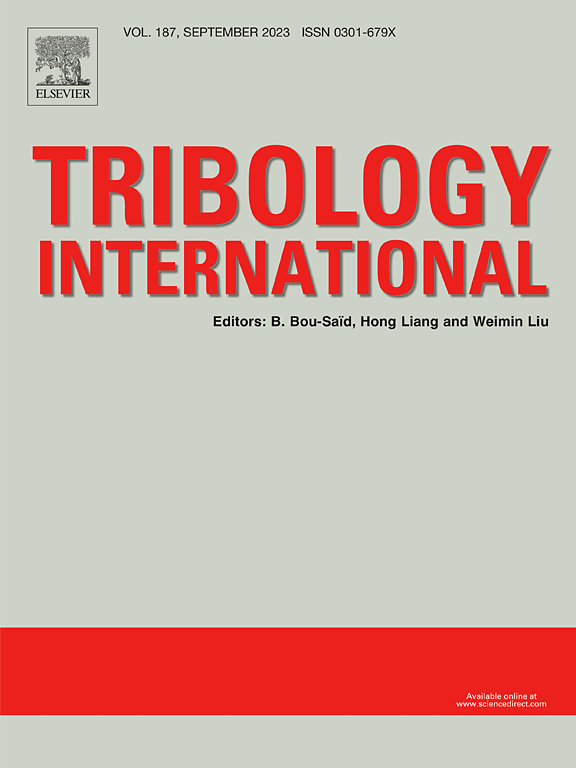叶脉仿生纹理在硬质合金刀具表面的摩擦学性能研究
IF 6.1
1区 工程技术
Q1 ENGINEERING, MECHANICAL
引用次数: 0
摘要
针对硬质合金刀具在高速切削钛合金过程中出现的润滑失效和摩擦磨损加剧问题,提出了一种基于叶片脉化仿生原理的具有分形几何特征的表面织构设计方法。建立了分形叶脉结构的流体动力润滑理论模型,揭示了分形拓扑角对润滑膜压力分布和流体输运行为的调节机制。采用飞秒激光加工技术制备了叶脉仿生纹理。利用FLUENT软件进行了多物理场耦合仿真,阐明了织构形态与润滑膜动态特性之间的结构-性能关系。摩擦磨损实验及微观分析表明,分形拓扑角为45°时,润滑油膜压力平均提高37%;在往复摩擦磨损试验中,该织构表面(分形拓扑角为45°)的湿摩擦系数比非织构表面(0.246 ~ 0.206)低17%。本研究为仿生功能表面在精密制造领域的工程应用提供了理论基础和技术基础。本文章由计算机程序翻译,如有差异,请以英文原文为准。
Investigation on tribological properties of leaf-vein-inspired bionic textures on cemented carbide tool surfaces
Regarding the lubrication failure and exacerbated friction/wear issues encountered when carbide tools are used in high-speed cutting of titanium alloys, this study proposes a surface texturing design methodology—featuring fractal geometric characteristics and based on the bionic principles of leaf venation. A theoretical model of hydrodynamic lubrication for the fractal leaf-vein texture was established, revealing the regulatory mechanism by which the fractal topological angle modulates the pressure distribution of the lubricant film and the fluid transport behavior. The leaf-vein-inspired bionic textures were fabricated using femtosecond laser machining technology. Multiphysics coupling simulations were performed using FLUENT software, elucidating the structure–property relationship between the texture morphology and the dynamic characteristics of the lubricant film. Friction and wear experiments, accompanied by microscopic analysis, demonstrated that at a fractal topological angle of 45°, the average lubricant film pressure is increased by 37%; in the reciprocating friction and wear test, the wet friction coefficient of this textured surface (with a fractal topological angle of 45°) was 17% lower than that of the non-textured surface (from 0.246 to 0.206). This work provides theoretical underpinnings and a technical foundation for the engineering application of biomimetic functional surfaces in the field of precision manufacturing.
求助全文
通过发布文献求助,成功后即可免费获取论文全文。
去求助
来源期刊

Tribology International
工程技术-工程:机械
CiteScore
10.10
自引率
16.10%
发文量
627
审稿时长
35 days
期刊介绍:
Tribology is the science of rubbing surfaces and contributes to every facet of our everyday life, from live cell friction to engine lubrication and seismology. As such tribology is truly multidisciplinary and this extraordinary breadth of scientific interest is reflected in the scope of Tribology International.
Tribology International seeks to publish original research papers of the highest scientific quality to provide an archival resource for scientists from all backgrounds. Written contributions are invited reporting experimental and modelling studies both in established areas of tribology and emerging fields. Scientific topics include the physics or chemistry of tribo-surfaces, bio-tribology, surface engineering and materials, contact mechanics, nano-tribology, lubricants and hydrodynamic lubrication.
 求助内容:
求助内容: 应助结果提醒方式:
应助结果提醒方式:


